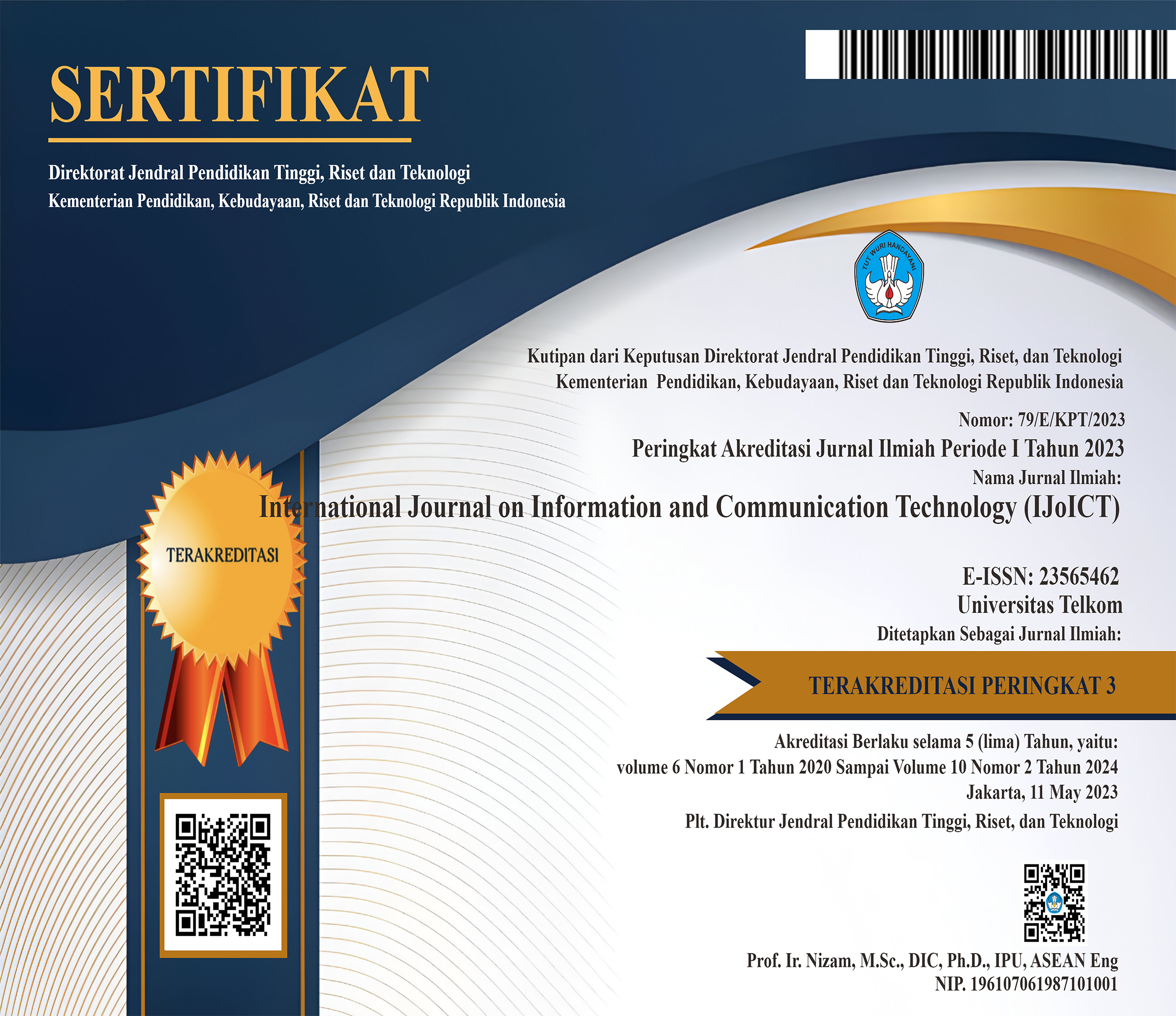Performance Analysis of TCP Fractional Window Increment and Adaptive Fractional Window on IEEE 802.11 Multihop Ad Hoc Networks
DOI:
https://doi.org/10.21108/ijoict.v9i1.716Keywords:
Transmission Control Protocol, FeW, AFW, ns2Abstract
TCP, a layer 4 transport protocol, plays a crucial role in both wireless and wired networks. However, its performance in wireless networks is often unsatisfactory due to issues such as bandwidth limitations and utility problems with lower network layers. The mobility effect further exacerbates TCP's performance, as it fails to distinguish between connection failure and congestion-induced connection loss. In response to this challenge, researchers have explored potential solutions and found that TCP FeW outperforms the existing TCP NewReno. Building upon this background, this paper aims to simulate and analyze the performance of TCP AFW and TCP FeW in an IEEE 802.11 network. The simulations conducted using ns2 in a limited environment with random mobile scenarios reveal that TCP AFW achieves a 1.12% higher throughput compared to FeW, even with minimal modifications.
Downloads
References
[2] Nahm, K, Helmy, A, and Jay Kuo, C, 2005, TCP over Multihop 802.11 Networks : Issues and Performance Enhancement, Proceeding of ACM MobiHoc '05, Urbana-Champaign, Illinois, USA, 277-287.
[3] Nahm, K, Helmy, A, and Jay Kuo, C, 2008, Cross-Layer Interactions of TCP Ad Hoc Routing Protocols in Multihop IEEE 802.11 Networks, IEEE Transaction on Mobile Computing, vol. 7, no. 4, pp. 458-459.
[4] YU, X, 2004, Improving TCP Performance over mobile Ad Hoc Networks by exploiting Cross Layer Information Awareness, Proceedings of ACM MobiCom '04, Philadelphia, Pennsylvania, USA, pp 231-244.
[5] Kristiadi, Andriyas Danu Hari, Simulation of TCP Fractional Window Increment (FeW) in IEEE 802.11 Multihop Network.
[6] Holland, G., Vaidya, N., 1999. Analysis of TCP Performance over Mobile Ad Hoc Networks. proc. IEEE/ACM MobiCom, p-219-230.
[7] Johnson, D., Maltz, D., Hu, Y., 2004. The Dynamic Source Routing for Mobile Ad Hoc Networks IETF Internet Draft Available fromhttp://www.ietf.org/internet-drafts/draftietf-manet-dsr-10.txt
[8] Kurose, J., F., and Ross, KW, 2009, Computer Networking: A Top-Down Approach, 5th Edition, Addison Wesley Longman Publishing Co., Inc., Boston, Massachusetts, USA.
[9] Peterson, LL, and Davie, B, S., Computer Networks: A System Approach, 4th Edition, Morgan Kaufmanm, San Francisco, California, USA.
[10] RFC 2001, 1997, TCP Slow Start, Congestion Avoidance, Fast Retransmit, and Fast Recovery Algorithm, The Internet Engineering Task Force (IETF), Washington DC, USA. [11] RFC 793, 1981, Transmission Control Protocol, The Internet Engineering Task Force (IETF), Washington DC, USA.
[12] Stevens, WR, TCP/IP Illustrated, Volume 1: The Protocols, ed. 1, Addison Wesley Longman Publishing Co., Inc., Boston, Massachusetts, USA.
Downloads
Published
How to Cite
Issue
Section
License
Manuscript submitted to IJoICT has to be an original work of the author(s), contains no element of plagiarism, and has never been published or is not being considered for publication in other journals. Author(s) shall agree to assign all copyright of published article to IJoICT. Requests related to future re-use and re-publication of major or substantial parts of the article must be consulted with the editors of IJoICT.








.png)

.jpg)




